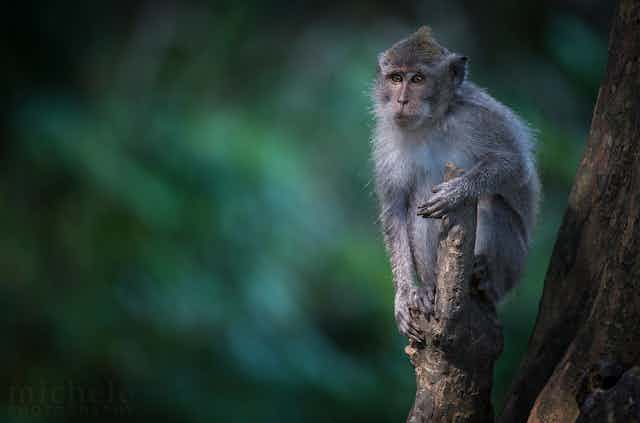Picture a tropical rainforest, with thousands of species per hectare, and it’s quite easy to believe that up to three quarters of all plant and animal species are found in the tropics. But what makes the tropics so species-rich compared to areas closer to the poles?
This question has concerned scientists for centuries with a common theory being that species may actually evolve faster in the tropics, and go extinct less often. Yet there has been no evidence to support this long-held idea … until now.
In a study published today in PLOS Biology, French researcher Jonathan Rolland and his colleagues seek to explain why species diversity decreases from the equator to the poles – called the “latitudinal diversity gradient”.
‘Out of the tropics’?
Many hypotheses have been put forward over the years to explain the latitudinal diversity gradient, including the well-regarded “out of the tropics” hypothesis.
The idea is that there are more species in the tropics because they evolve faster there and go extinct less often – and these highly diverse tropical species then colonised the temperate regions (hence “out of the tropics”).
However, recent work has suggested that there is no link between diversification rate and latitude – meaning species do not evolve faster at lower latitudes. Therefore, the “out of the tropics” theory does not explain why species numbers increase closer to the equator.
Instead, the tropics may be richer merely because tropical lineages have had more time to diversify than temperate ones. Considering the earth was mostly covered in tropics 80 million years ago, tropical species have had more time to evolve than temperate ones – perhaps explaining why they may be more diverse today.
Tropics produce the most species
Rolland and colleagues set out to test these theories using applied mathematical models and worldwide mammalian datasets. The technology allowed them to analyse a nearly complete phylogeny of 5,020 mammalian species covering 170 million years of their evolutionary history.
Craig Moritz from the Australian National University said, “There has been scepticism to whether if we can really use phylogeny of modern day taxan to address these questions – the reason being we can’t sample species that are now extinct.”
The current study used new analytical tools to overcome this difficulty. “There have been substantial advancements very recently (which are incorporated into this paper) that have extended the existing method to be able to address these questions,” said Professor Moritz. “These new techniques are analytically extremely strong.”
When looking at diversity in the tropics and the temperate zone, Rolland and colleagues found all but one of the eight most species-rich groups of mammals were more diverse in the tropics.

This meant rabbits and hares (lagomorphs) were the only group that were more diverse in the temperate zone, most likely owing to the fact they are a lineage that is highly adapted to a cooler climate.
To determine the source of this diversity in the tropics, Rolland and his colleagues tested rates of speciation, extinction, and range expansion for each group and related this back to the species being either temperate or tropical.
High speciation, low extinction
Overall, the results showed that speciation rate were higher, and extinction rates were lower, in the tropics compared to the temperate zones. This supports the idea that more species arise in the tropical regions.

By estimating the rates of range expansion (the direction and amount of species movement) the study also found support for the “out of the tropics” hypothesis. Species more likely moved from the tropics to temperate zones rather than the other way around.
Bill Laurance, from James Cook University, related the results back to Australia’s own flora and fauna. “The tropical regions appear to be the ‘cradle’ for much of Earth’s biodiversity. For instance, in Australia, a very primitive species similar to the ancestor of all kangaroos and wallabies, the musky rat-kangaroo, lives today in the rainforests of north Queensland. Many iconic groups of arid-adapted Australian plants, including eucalyptus trees, also originated in rainforests.”

What about the rest of the animal (and plant) kingdom?
In terms of next steps, Professor Laurance said: “The biggest priority is probably to apply the sophisticated approach the authors used to other groups of species, such as birds, beetles or trees, to see if one gets the same result. My money says you probably would, for most groups of species.”
However, being able to assess other groups relies on the scope of existing datasets.
“In the case of plants and butterflies and other groups that you might try this with, success is going to depend on having a very complete phylogeny,” cautioned Professor Moritz.
For now, the study highlights the importance of the tropical regions – not only are these highly threatened areas supporting the majority of species within themselves, they are also the ancient source for many temperate species.

